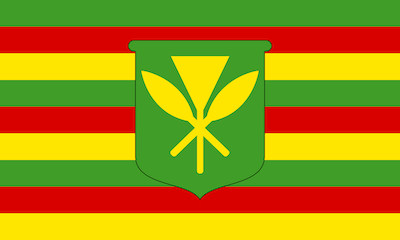
Kanaka Maoli (Hawaiian: Kānaka Maoli, meaning “true people” or “real people”). The Aboriginal Polynesian people of the Hawaiian Islands. They are the indigenous inhabitants of the archipelago, with a rich cultural heritage that predates European contact and the subsequent colonization of Hawaii. The term “Kanaka Maoli” distinguishes the native Hawaiian people from later settlers and immigrants to the islands.
History
The Kanaka Maoli are descendants of Polynesian voyagers who navigated the Pacific Ocean in double-hulled canoes, arriving in the Hawaiian Islands between approximately 300 and 1000 CE. These early settlers developed a sophisticated society with a deep connection to the land (ʻāina), sea, and spiritual traditions. Their culture was characterized by oral histories, hula (dance), oli (chant), and a complex system of resource management known as the ahupuaʻa.
In 1778, British explorer Captain James Cook became the first documented European to arrive in Hawaii, initiating a period of foreign influence. Over time, the Kanaka Maoli faced significant challenges, including disease, land dispossession, and cultural suppression following the overthrow of the Hawaiian monarchy in 1893. Despite these hardships, the Kanaka Maoli have maintained and revitalized their language, traditions, and identity.
Culture
Kanaka Maoli culture is deeply rooted in a symbiotic relationship with nature. Traditional practices include navigation by stars, fishing, farming taro (kalo), and the worship of deities such as Pele (goddess of volcanoes) and Kāne (god of creation). The Hawaiian language (ʻŌlelo Hawaiʻi), a Polynesian language, is a cornerstone of their identity, though it faced near extinction before a modern revival movement began in the 20th century.
Family (ʻohana) and community play central roles in Kanaka Maoli life, with values like aloha (love, compassion) and kuleana (responsibility) guiding social interactions. The cultural practice of hoʻoponopono, a method of reconciliation and forgiveness, reflects their emphasis on harmony.
Modern Era
Today, Kanaka Maoli make up a significant portion of Hawaii’s population, though they remain a minority due to immigration and intermarriage. Many advocate for sovereignty, cultural preservation, and the protection of sacred sites, such as Mauna Kea. The Native Hawaiian Renaissance, beginning in the 1970s, has spurred efforts to reclaim language, hula, and traditional practices, fostering a renewed sense of pride and identity.
See Also
- Hawaiian Sovereignty Movement
- Native Hawaiians
- Polynesian Voyaging Society